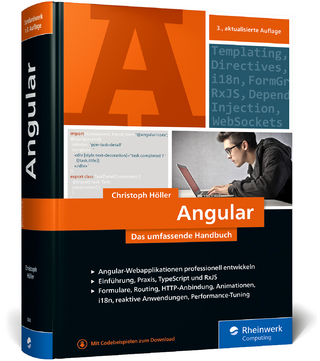
Context-Aware Applications in Mobile Distributed Systems
Seiten
2008
|
1., Aufl.
Shaker (Verlag)
978-3-8322-7054-4 (ISBN)
Shaker (Verlag)
978-3-8322-7054-4 (ISBN)
- Keine Verlagsinformationen verfügbar
- Artikel merken
The context of a user of a mobile device reflects the current usage environment and represents a valuable source of manifold information, e. g. the user’s current location or nearby persons. Context-aware applications can benefit from this information by adapting their behavior to the user’s current context which improves user support. For example, a context-aware application can proactively trigger an application function if a specific contextual situation occurs. However, the dynamic character of context as well as the limited capabilities of mobile devices complicate development of context-aware applications.
This book provides solutions that ease the implementation of context-aware applications for mobile distributed systems. A context modeling approach is presented that enables specification of application-specific, expressive context models. The modeling approach is based on a UML profile, a lightweight extension of the UML, which enforces the specification of context models that comply with the restrictions of the application domain, e. g. that make lightweight information exchange possible. A distribution protocol for context information is presented that enables sharing of information among system participants and realizes decentralized and redundant storage of context information which improves information availability. This distribution protocol implements an abstract consistency model for context that incorporates validity of context information and presence of information sources in order to rate freshness of information. Privacy protection in the domain of context-aware applications is discussed and means to limit access to private context information are presented that respect the limited capabilities of mobile devices. Finally, a general software architecture for context-aware applications is presented that encompasses the developed concepts. This architecture is realized by a context framework which supports context-aware applications in adapting application behavior to the user’s current context. Usage of the framework facilitates development of context-aware applications and enables the application developer to focus on the implementation of the specifics of his application.
Throughout the book, a context-aware meeting system is used as a case study in order to improve the understanding of the depicted concepts.
This book provides solutions that ease the implementation of context-aware applications for mobile distributed systems. A context modeling approach is presented that enables specification of application-specific, expressive context models. The modeling approach is based on a UML profile, a lightweight extension of the UML, which enforces the specification of context models that comply with the restrictions of the application domain, e. g. that make lightweight information exchange possible. A distribution protocol for context information is presented that enables sharing of information among system participants and realizes decentralized and redundant storage of context information which improves information availability. This distribution protocol implements an abstract consistency model for context that incorporates validity of context information and presence of information sources in order to rate freshness of information. Privacy protection in the domain of context-aware applications is discussed and means to limit access to private context information are presented that respect the limited capabilities of mobile devices. Finally, a general software architecture for context-aware applications is presented that encompasses the developed concepts. This architecture is realized by a context framework which supports context-aware applications in adapting application behavior to the user’s current context. Usage of the framework facilitates development of context-aware applications and enables the application developer to focus on the implementation of the specifics of his application.
Throughout the book, a context-aware meeting system is used as a case study in order to improve the understanding of the depicted concepts.
| Reihe/Serie | Berichte aus der Informatik |
|---|---|
| Sprache | englisch |
| Maße | 148 x 210 mm |
| Gewicht | 347 g |
| Einbandart | Paperback |
| Themenwelt | Informatik ► Software Entwicklung ► Mobile- / App-Entwicklung |
| Mathematik / Informatik ► Informatik ► Theorie / Studium | |
| Schlagworte | context-awareness • Context-Framework • Context Model • HC/Informatik, EDV/Informatik • Mobile Devices • mobile systems • Modeling • UML |
| ISBN-10 | 3-8322-7054-X / 383227054X |
| ISBN-13 | 978-3-8322-7054-4 / 9783832270544 |
| Zustand | Neuware |
| Haben Sie eine Frage zum Produkt? |
Mehr entdecken
aus dem Bereich
aus dem Bereich
Das große Handbuch zum JavaScript-Framework
Buch | Hardcover (2022)
Rheinwerk (Verlag)
39,90 €
Eine umfassende Einführung
Buch | Softcover (2021)
De Gruyter Oldenbourg (Verlag)
44,95 €


